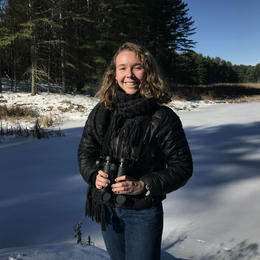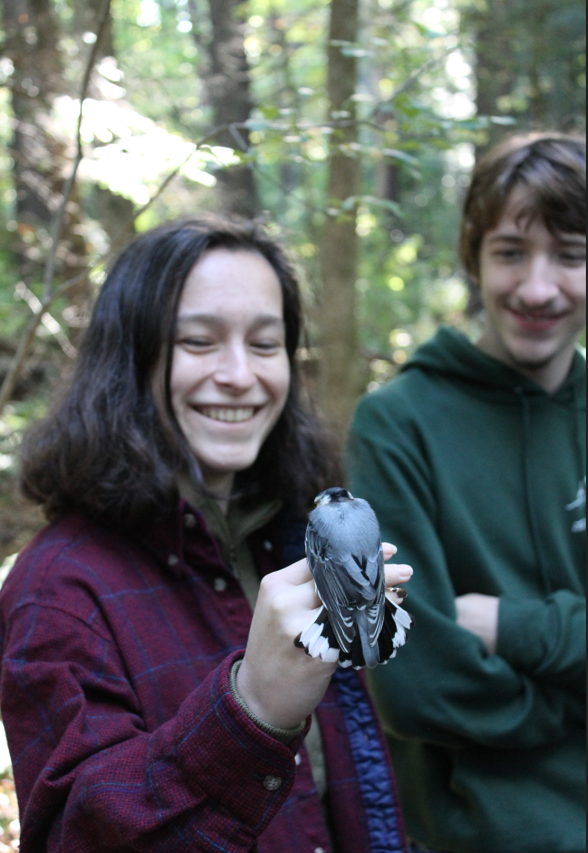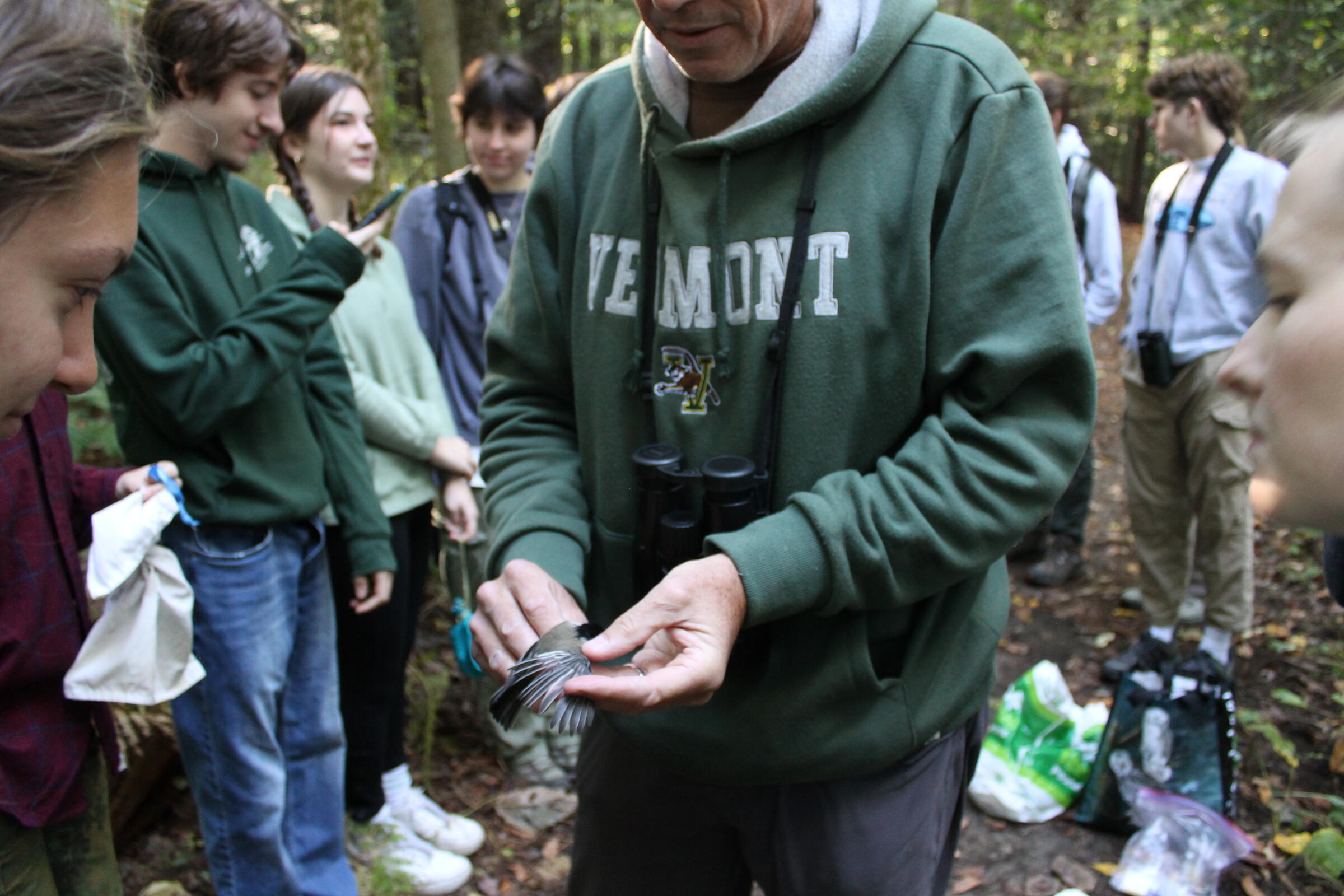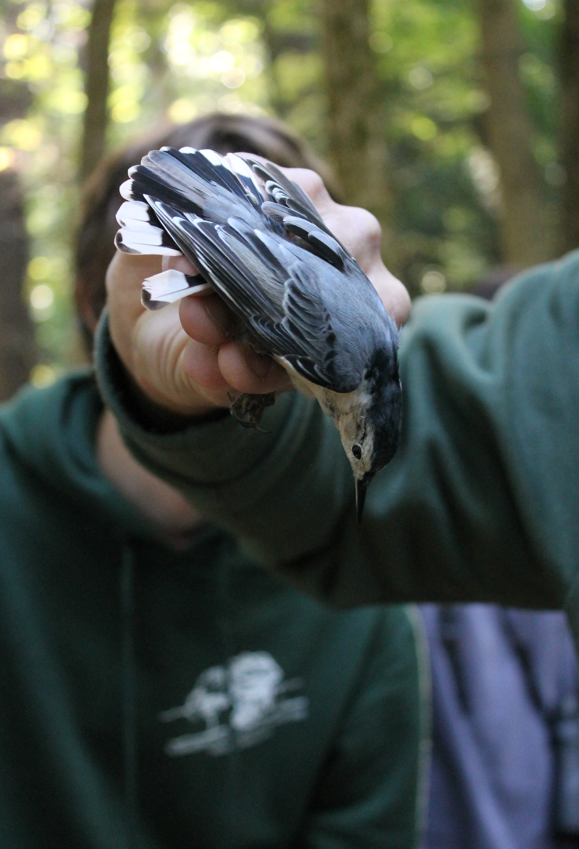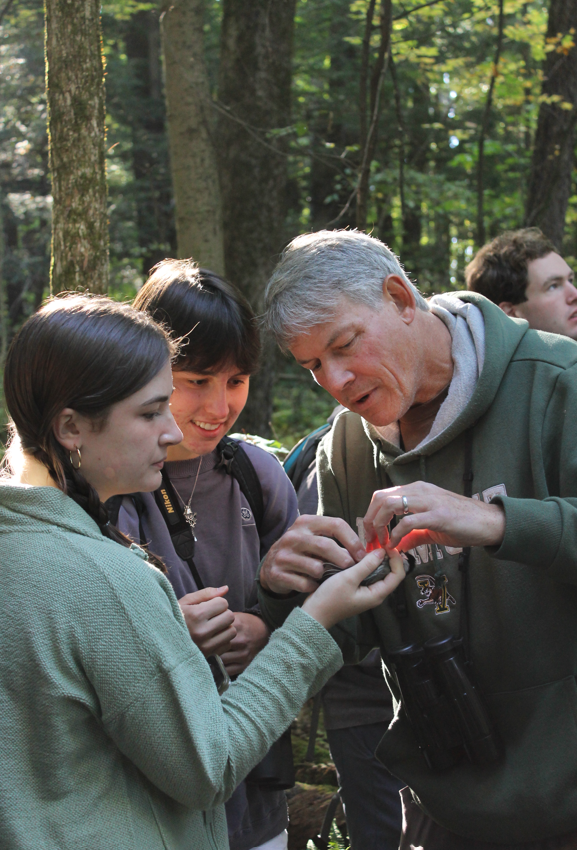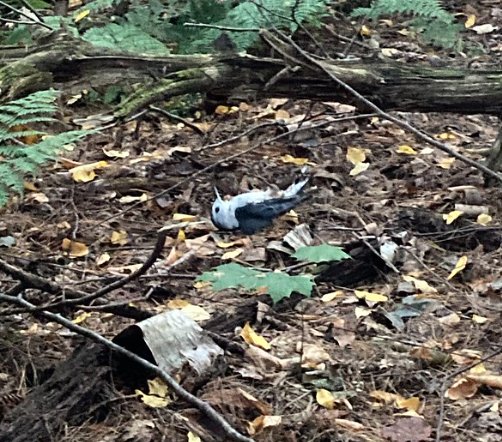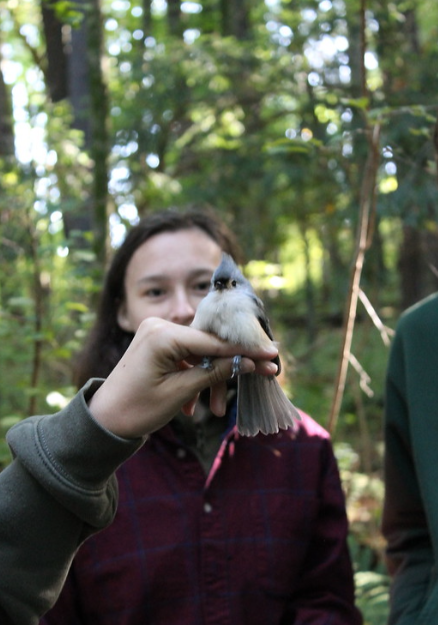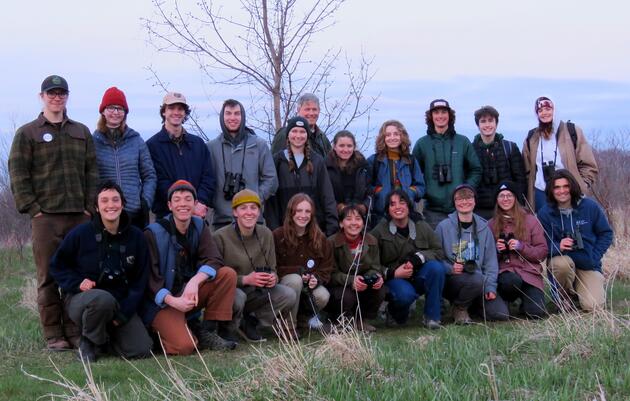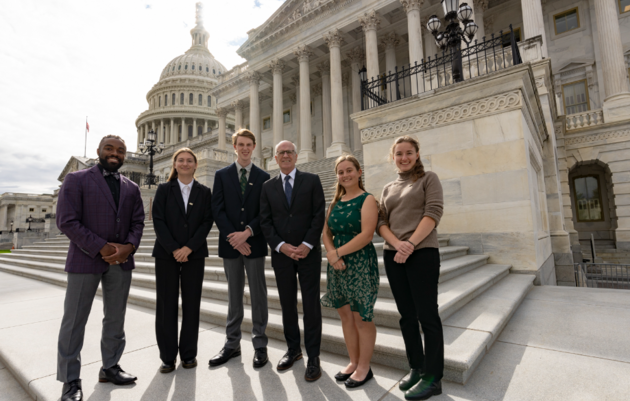On a crisp and sunny Sunday morning I pull into Jeffords Hall parking lot at a quarter of eight to join the University of Vermont (UVM) Birding Club for a bird banding demonstration. The lot is rather empty other than a cluster of college students with binoculars hanging from their necks. I am welcomed by club officers and quietly chat with a few chapter members about how their semesters are going thus far and whether they have seen any migratory marvels this fall. One student shares their enthusiasm for Cackling Geese, a stout lookalike of their larger relative the Canada Goose.
At eight, Professor Allan Strong arrives with two long, skinny metal poles and plastic shopping bag (now vintage since Vermont banned single-use plastics in 2020). He says plastic shopping bags make ideal storage for banding nets and I can attest that we do the same here at Audubon Vermont. Allan is a professor in the Rubenstein School and Director of the Wildlife and Fisheries Biology program as well as a longtime volunteer and friend of Audubon Vermont. As a federally permitted bird bander, Professor Strong often leads exciting events for the club to get up close and personal with songbirds and owls alike. Today, we are focused on capturing and banding Black-capped Chickadees. Why Chickadees? The answer is simpler than you would think. They are easy to catch in mist nets and provide a great learning opportunity for students.
After a circle of introductions, we make our way from the lot to Centennial Woods Natural Area, a 65-acre plot across the street from the UVM campus. The area boasts a diverse array of habitats including mature conifer stands, mixed hardwoods, fields, streams, and wetland areas that support wildlife. It’s a popular area for locals and students, but also serves as an amazing living laboratory for UVM.
When we get to a mixed stand of hardwood trees and hemlock, we stop to set up the mist nets. Mist nets are made of very fine mesh that is nearly invisible. Birds are unable to see the net, fly right into it, and are caught in a pouch-like section where they are unable to flap their wings. While momentarily uncomfortable or scary for the birds, mist nets are a necessary tool for us to learn about and understand migration, breeding, and populations of different bird species. In addition to providing hands-on experience, the goal of capturing chickadees at Centennial is to collect data on survival rates, which is a relatively easy parameter to estimate from capture-mark-recapture data. Professor Strong shares that “the hope is for students to use the chickadee data from Centennial Woods to run some moderately sophisticated models and estimate survival rates from a data set that they have helped to collect.”
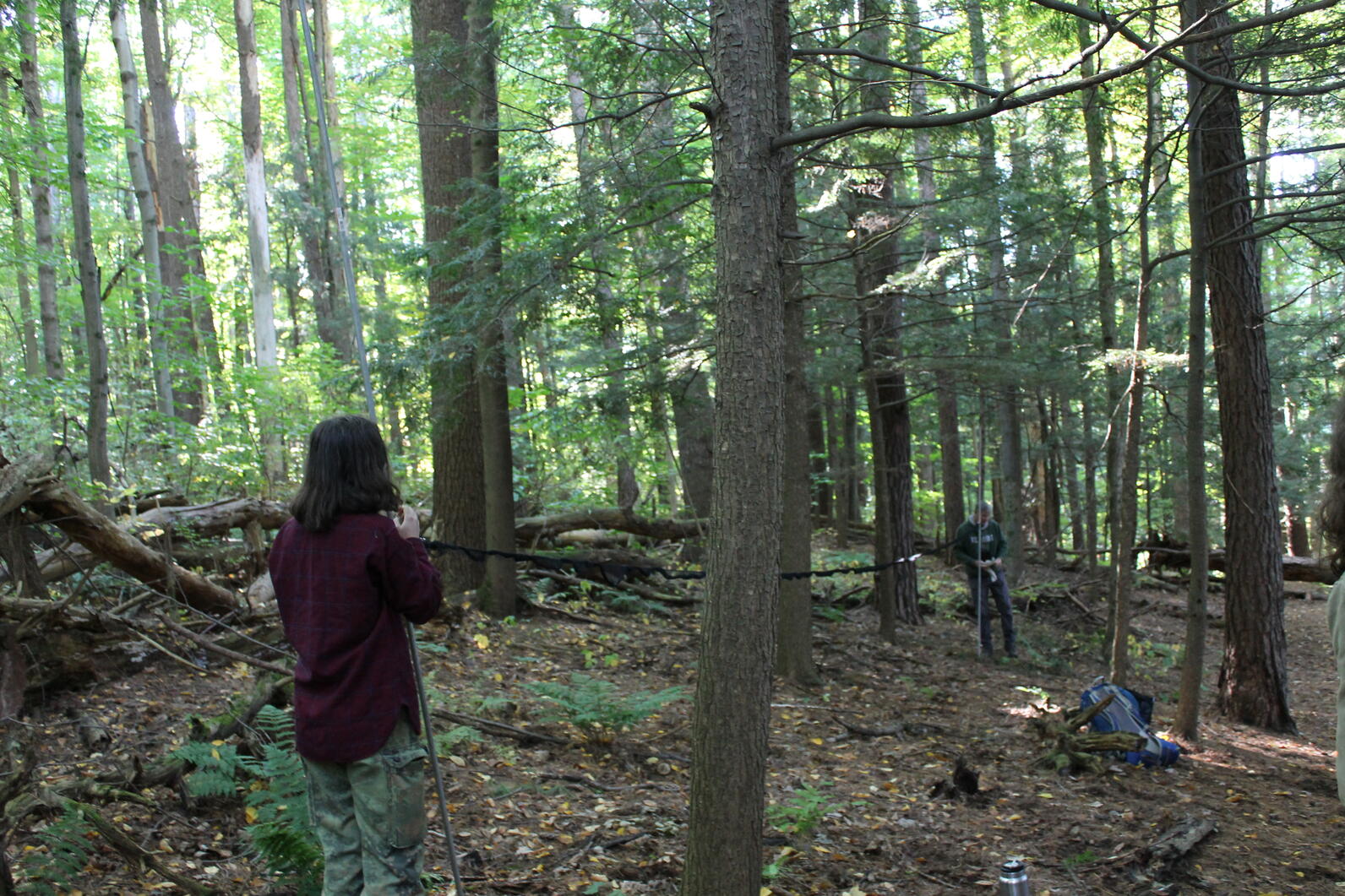
Once our nets are set up, we gave the area some space and Professor Strong plays what he and other bird banders call “the magic tape.” This tape is a mashup of Eastern Screech Owl calls, Blue Jay and Black-capped Chickadee alarm calls, etc. Chickadees are a curious bird, they often are the alarm system of the forest for other birds, so they are the first to come investigate the sounds emanating from our speaker. It only takes about 2-3 minutes for our first bird, a Tufted Titmouse, to fall into the net. Then a Black-capped Chickadee, a White-breasted Nuthatch, and two more chickadees. In total, we have five small birds trapped in the mist net. Professor Strong turns off the tape and we approach the net while making sure to give the birds space.
Chickadees have a reputation in the banding community for being pesky in the net! They seem to have a knack for tangling beyond belief. It takes Professor Strong almost five minutes to remove the first chickadee from the net while the rest of us silently watch him work against invisible knots and tangles. While he works, the Tufted Titmouse grows impatient and attempts to peck itself out of the net. The White-breasted Nuthatch lays on its back with a blank expression, accepting whatever its fate may be.
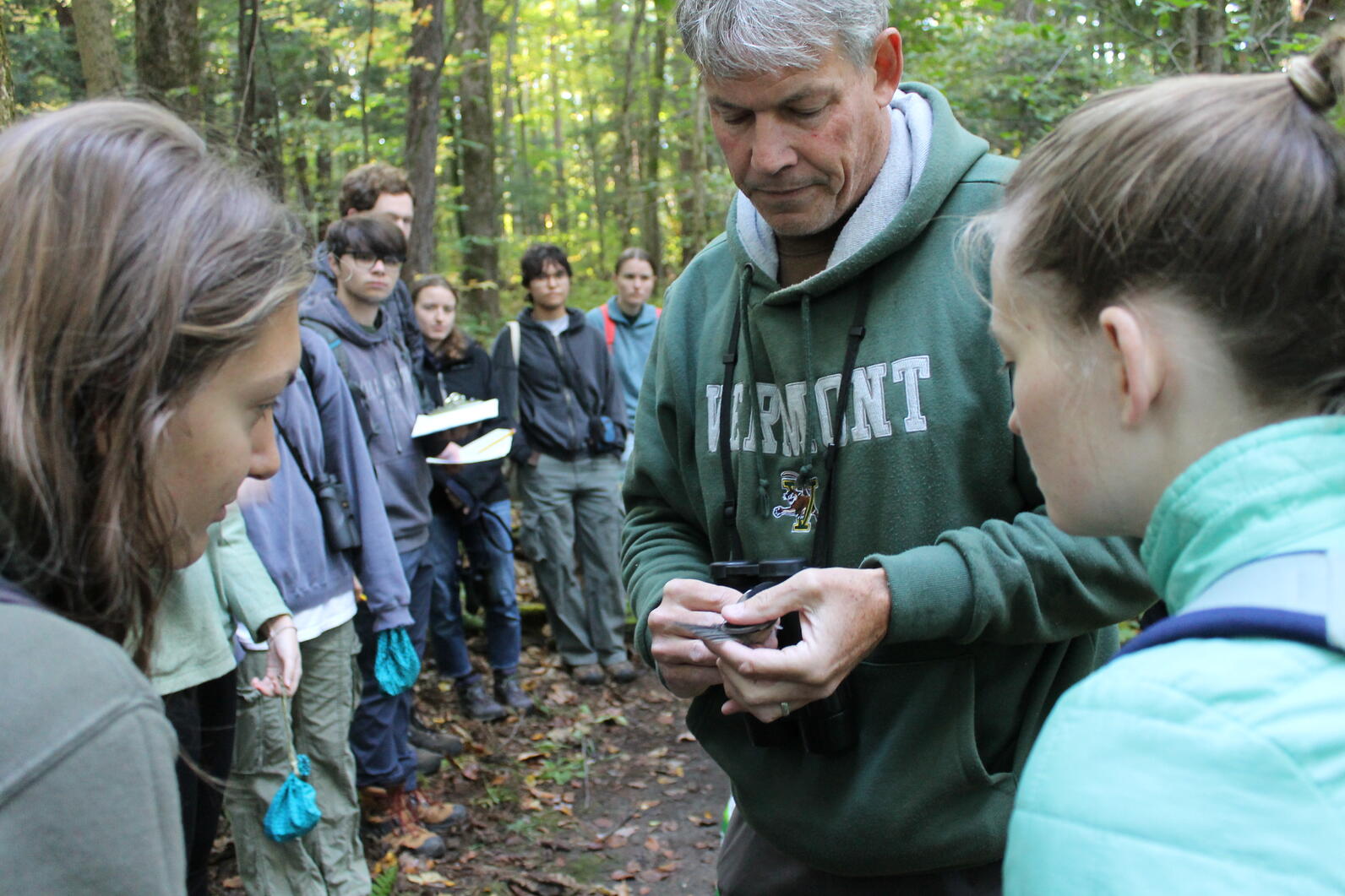
On our walk back to campus, I chat with a student about a challenging dendrology class, study abroad opportunities, and which brand offers the best binoculars. I love getting out in the field with the UVM Birding Club – they are an excited, inspiring group of young people who care deeply about birds and the spaces they need to survive. The group feels like a special place to come together and share your nerdy bird thoughts in community. I hope to join again for another bird walk or event!
The UVM Birding Club is a campus chapter of the National Audubon Society. To learn more about campus chapters or to start your own visit the Audubon on Campus page.
Follow the UVM Birding Club on Instagram.
Please note: To band and handle wild birds you need a federal permit to be in accordance with the Migratory Bird Treaty Act. It is illegal to handle birds otherwise.
See a bird with a federal band or color marker? Report it here.

